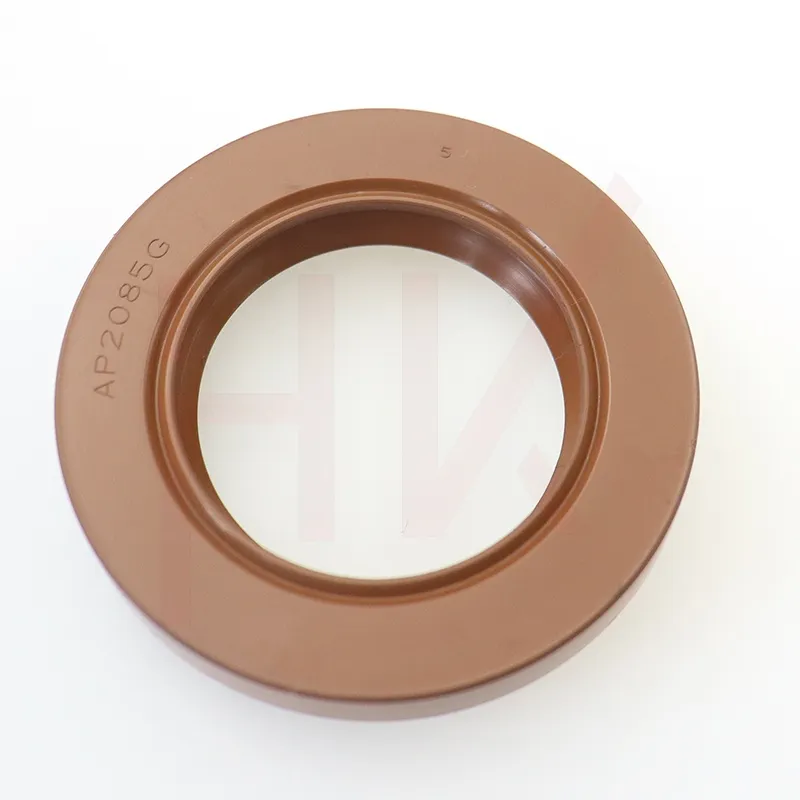Dec . 01, 2024 22:29 Back to list
hydraulic oil seal types
Understanding Hydraulic Oil Seal Types A Comprehensive Guide
Hydraulic systems are integral to many machinery and equipment, relying heavily on hydraulic oil to transmit power effectively. One of the critical components that ensure the integrity and efficiency of these systems is the hydraulic oil seal. By preventing fluid leaks and keeping contaminants out, seals play a crucial role in maintaining the performance and longevity of hydraulic systems. In this article, we will explore various types of hydraulic oil seals, their functions, and applications.
What are Hydraulic Oil Seals?
Hydraulic oil seals are devices that isolate and contain hydraulic oil within the system while preventing leakage. They are engineered to fit snugly around moving parts, such as rods, pistons, and shafts, ensuring a tight seal without hindering movement. The choice of seal type is essential, as it affects the overall performance, reliability, and efficiency of the hydraulic system.
Types of Hydraulic Oil Seals
1. O-Rings
O-rings are one of the most common types of seals used in hydraulic applications. They are circular rings made from elastomeric materials, such as nitrile or polyurethane. O-rings are designed to fit in a groove, creating a seal when compressed between two surfaces. Their simplicity and versatility make them ideal for various hydraulic applications, from low to high-pressure environments. However, they may not be suitable for high-speed applications where friction can wear them out quickly.
2. U-Cups
U-cups, also known as lip seals, have a U-shaped cross-section, making them effective for sealing hydraulic cylinders. Their design allows them to maintain a tight seal while accommodating the motion of the rod. U-cups are available in various materials, including rubber and thermoplastics, and they can handle higher pressures and temperatures compared to O-rings. They are commonly used in hydraulic cylinders, pumps, and other applications requiring reliable sealing under dynamic conditions.
3. V-Rings
V-rings, or V-seals, feature a unique design that allows them to provide effective sealing against dust, dirt, and moisture, making them ideal for protecting the lubrication systems within machinery. They consist of a V-shaped lip that rides against a shaft. The flexibility of the V-ring allows it to adapt to wear and maintain a consistent seal even as components move. They are commonly used in agricultural machinery, construction equipment, and automotive applications.
hydraulic oil seal types

4. Rod Seals
Rod seals are specifically designed for hydraulic cylinders and are critical for preventing hydraulic fluid leaks around the piston rod. They usually feature a composite design, incorporating multiple sealing lips to enhance sealing performance. Rod seals must withstand high pressures and varying temperatures, and they are often used in heavy-duty applications, such as industrial machinery and aerospace systems.
5. Piston Seals
Piston seals are used to achieve a perfect seal within hydraulic cylinders, preventing fluid from bypassing the piston. These seals are available in various configurations, including T-seals and double-acting seals, and are typically made from materials that can endure extreme pressure and temperature conditions. Piston seals are essential for maintaining system efficiency and are widely used in mobile and stationary hydraulic equipment.
6. Backup Rings
While not seals in themselves, backup rings are often used in conjunction with other seal types to improve sealing performance. They provide support and prevent extrusion of the primary seal under high-pressure conditions, thereby extending the life of the seal. Backup rings can be made from materials such as PTFE or polyamide, and they are an essential component in high-pressure hydraulic applications.
Choosing the Right Hydraulic Oil Seal
When selecting the appropriate hydraulic oil seal, several factors must be considered, including the working pressure, temperature range, and the type of fluid used in the system. Compatibility with the hydraulic fluid, resistance to wear and tear, and the seal's ability to cope with dynamic and static conditions are critical for optimal performance. Consulting with a seal manufacturer or supplier can help you identify the best seal type for your specific application.
Conclusion
Hydraulic oil seals are vital components that significantly impact the efficiency and longevity of hydraulic systems. Understanding the various types of seals available and their applications can help you make informed decisions to enhance the performance of your machinery. Investing in the right hydraulic oil seals ensures that your systems operate smoothly, reducing downtime and maintenance costs while extending the lifespan of equipment.
-
TCN Oil Seal Metal Ring Reinforcement for Heavy Machinery
NewsJul.25,2025
-
Rotary Lip Seal Spring-Loaded Design for High-Speed Applications
NewsJul.25,2025
-
Hydraulic Cylinder Seals Polyurethane Material for High-Impact Jobs
NewsJul.25,2025
-
High Pressure Oil Seal Polyurethane Coating Wear Resistance
NewsJul.25,2025
-
Dust Proof Seal Double Lip Design for Construction Equipment
NewsJul.25,2025
-
Hub Seal Polyurethane Wear Resistance in Agricultural Vehicles
NewsJul.25,2025
-
The Trans-formative Journey of Wheel Hub Oil Seals
NewsJun.06,2025
Products categories
















